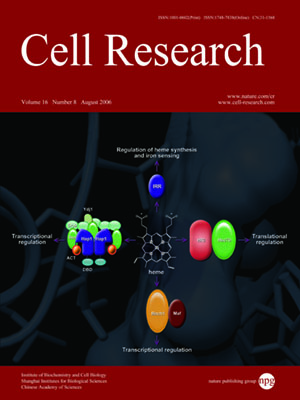Volume 16 Issue 8, August 2006: 726-730
ORIGINAL ARTICLES
Magnesium permeation through mechanosensitive channels: single-current measurements
Alexander V Staruschenko, Anastasiya V Sudarikova, Yuri A Negulyaev, Elena A Morachevskaya
1Institute of Cytology, Russian Academy of Sciences, Tikhoretsky Ave., 4, St Petersburg 194064, Russia; 2Department of Physiology, University of Texas Health Science Center at San Antonio, 7756-7703 Floyd Curl Drive San Antonio, TX 78229, USA
Correspondence: Yuri A Negulyaev(yurineg@mail.cytspb.rssi.ru)
Compelling evidence shows that intracellular free magnesium [Mg
2+]i may be a critical regulator of cell activity in
eukaryotes. However, membrane transport mechanisms mediating [Mg
2+] influx in mammalian cells are poorly understood.
Here, we show that mechanosensitive (MS) cationic channels activated by stretch are permeable for [Mg
2+] ions at different
extracellular concentrations including physiological ones. Single-channel currents were recorded from cell-attached and
inside-out patches on K562 leukaemia cells at various concentrations of MgCl2 when [Mg
2+] was the only available carrier
of inward currents. At 2 mM [Mg
2+], inward mechanogated currents representing [Mg
2+] influx through MS channels corresponded
to the unitary conductance of about 5 pS. At higher [Mg
2+] levels, only slight increase of single-channel currents
and conductance occurred, implying that [Mg
2+] permeation through MS channels is characterized by strong saturation.
At 20 and 90 mM [Mg
2+], mean conductance values for inward currents carried by [Mg
2+] were rather similar, being equal
to 6.8 ± 0.5 and 6.4 ± 0.5 pS, respectively. The estimation of the channel-selective permeability according to constant
field equation is obviously limited due to saturation effects. We conclude that the detection of single currents is the main
evidence for [Mg
2+] permeation through membrane channels activated by stretch. Our single-current measurements document
[Mg
2+] influx through MS channels in the plasma membrane of leukaemia cells.
Cell Research (2006) 16:723-730. doi:10.1038/sj.cr.7310084; published online 25 July 2006
FULL TEXT | PDF
Browse 1908


